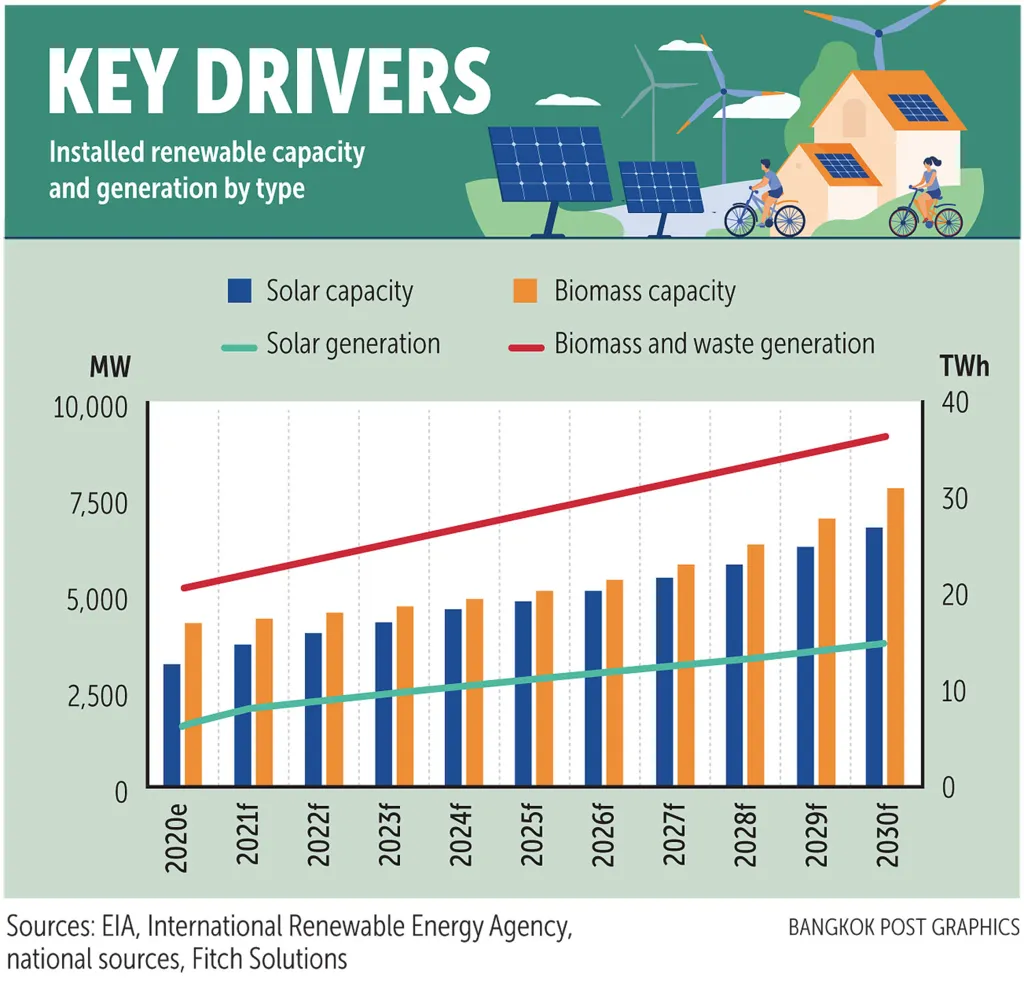Thailand is making big moves toward a cleaner energy future. The government has quadrupled the annual quota for public solar power projects, from 100 MW to 400 MW in 2024, as part of a broader push to cut electricity costs by 8% and reach carbon neutrality by 2065. This marks a bold step in Thailand renewable energy expansion, backed by aggressive policy shifts and growing investment.
By 2030, Thailand’s renewable energy capacity is expected to reach 21,403 MW, powered largely by solar PV, biomass, and floating solar systems. Rooftop solar is also expanding fast, with the quota for public installations rising from 50 MW to 200 MW, plus an additional 50 MW dedicated to Bangkok. These changes reflect not just ambition, but momentum.
Read Also: The Promise of Thailand Renewable Energy Initiatives
Policy Ambition Meets Infrastructure Limits in Thailand Renewable Energy Expansion

Thailand’s Power Development Plan (PDP) outlines an ambitious goal: for renewables to exceed 50% of the national power mix in the future. Projects like floating solar farms on dam surfaces are already being piloted and could add up to 500 MW of capacity. But even as policies shift forward, challenges on the ground remain.
A major obstacle is grid infrastructure. The current system was built for centralized, fossil-fuel power and not for the variable and decentralized flow of renewable energy. Unfortunately, without significant upgrades the grid may struggle to support the increasing number of renewable connections.
In addition to physical infrastructure, regulatory barriers continue to slow progress. These include high grid access costs, complex land use rules, and the absence of strong direct Power Purchase Agreements (PPAs). Together, they discourage private investment and limit the pace at which renewable projects can scale.
Thailand Renewable Energy Expansion Is Growing, But Still Lag
In 2022, power generation from renewables in Thailand totaled 21,860 GWh, while natural gas remained dominant at 114,640 GWh. This shows that while renewable energy is growing fast, it still plays a secondary role in the country’s energy mix.
To close this gap, Thailand is relying on more than just solar. The government’s Alternative Energy Development Plan (AEDP) promotes energy diversification, including storage systems and emerging technologies like green hydrogen. These strategies are designed to not only boost generation capacity but also ensure energy stability and resilience.
Read Also: Thailand Green Energy Transformation: Market Insights
Targeting Emissions and Unlocking Private Investment
Thailand aims to cut greenhouse gas emissions by 20–25% by 2030. Achieving this will require full engagement from the private sector, and the government is taking steps to support this through policy incentives and investment-friendly reforms. These include tax breaks for clean energy developers and streamlined procedures for project approval.
Thailand Renewable Energy Expansion: A Road Paved with Promise and Pressure
The pace of Thailand renewable energy expansion is picking up, and the targets are bold. With a growing focus on solar, biomass, and innovation, the country is laying the foundation for a greener future. But grid modernization, regulatory reform, and financing access will be critical in turning plans into reality. Thailand has the vision and the policies in place. Now, it must overcome its structural hurdles to fully unlock the potential of its renewable energy ambitions.







